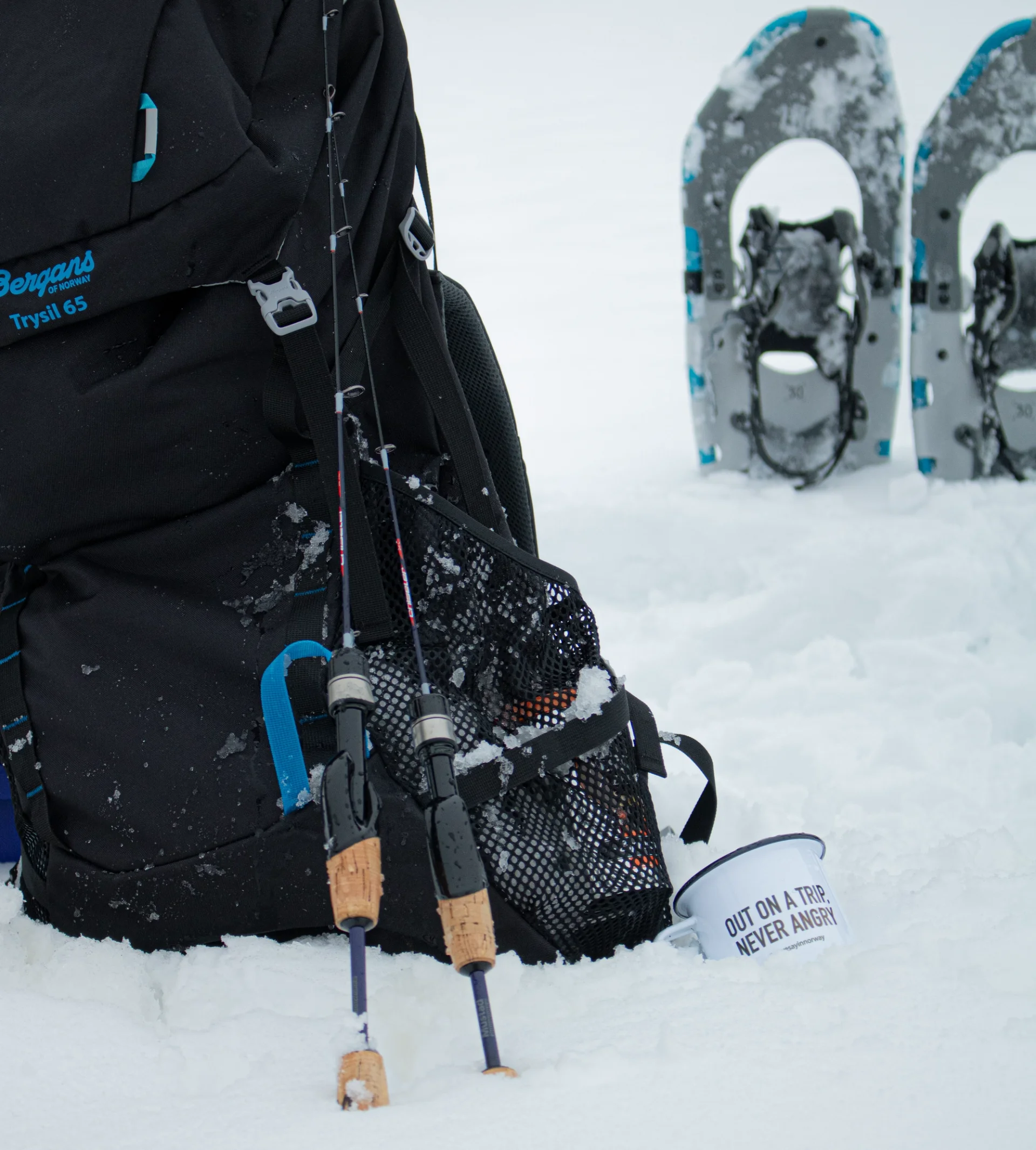ICE FISHING EFFICIENCY

When lakes and ponds freeze, the shift in fishing styles presents engaging opportunities for those willing to make the adjustments. Mobility generally decreases from open water boating, but whether you travel on foot, by snowmobile or truck, winter’s concentrating influence tends to shift the odds into the alert angler’s favor.
Site Selection
The rules of fish positioning remain largely the same when a solid layer covers the lake or pond. Predators like bass, pike and walleye want to locate near the best feeding opportunities and smaller fish try to avoid predation. Often, that makes shallow weed patches a good starting point.
In some cases, you might find reeds, grass or lily pads encased in the ice, or actually breaking the surface. Lacking these clear indicators, follow the standard rules for breaking down a lake or pond — where are the coves and pockets where weed lines grow? Where are the depth contour breaks? Where are the inflows, which keep the substrate soft and fertile?
Lake maps will help here, but if you’re just winging it for a spontaneous trip, drill a couple of test holes, drop a compact camera with handheld viewer and take a look at the local features. Once you locate a promising area, drill several holes and stagger them in and out of the vegetation to sample different depths.
Two Speeds
Given the vertical nature, ice fishing bait selection tends to be more concise than open water techniques. In many cases a two-pronged approach will do the job. Start with a spoon or jigging style bait, which uses a flashy, often rattling appeal to call fish in from afar or stimulate those nearby. Alternate that with a tungsten jig dressed with your favorite plastic body — maybe accented with a meal worm — and you’ll appeal to a range of species from crappie and bluegill to bass and walleye.
Something to consider is the often jagged and inhospitable ice surface. Most of the time, you’re dropping and retrieving a bait through the open water of a hole drilled through the ice; however, you lose some control over line angle and positioning when fighting a fish.
This is where Tuf-Line’s Micro-Coated Ice Line plays a key role in keeping anglers connected to the fish they entice. Impregnated with a coating that minimizes moisture absorption, this tightly-braided nylon line boasts a smooth texture that resists freezing and offers a high level of abrasion and shock resistance.
Stay Safe
Walking over very cold water should never be taken lightly, but following standard safety protocols will keep hazards at bay. Four inches is the accepted minimum ice thickness for foot travel. For snowmobiles, you want 5-7 inches, 8-12 for cars and 12-15 for light trucks.
A good way to check your ice thickness is to make a hole with a cordless drill or ice auger, drop a measuring tape and hook it to the hole’s bottom edge. Never rush an unsafe ice scenario, as a break through tempts hypothermic disaster.
Ice spikes that connect like a choker around your neck keeps an ice-gripping tool handy for unthinkable moments. Also, store a throw rope with a floating end within quick reach.
Lastly, fish with friends and you’ll never lack for a helping — possibly saving — hand. At the very least, you’ll always have someone to photograph your big catch.
